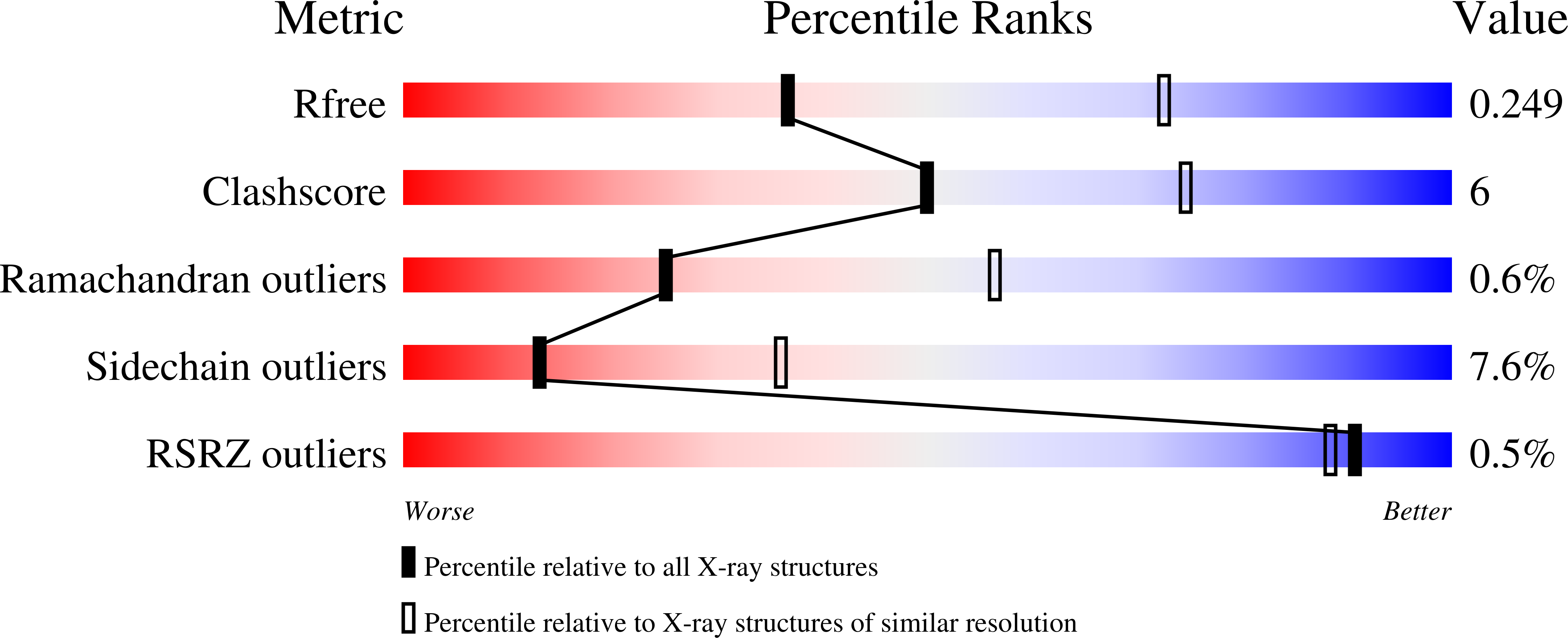The Broad Aryl Acid Specificity of the Amide Bond Synthetase McbA Suggests Potential for the Biocatalytic Synthesis of Amides.
Petchey, M., Cuetos, A., Rowlinson, B., Dannevald, S., Frese, A., Sutton, P.W., Lovelock, S., Lloyd, R.C., Fairlamb, I.J.S., Grogan, G.(2018) Angew Chem Int Ed Engl 57: 11584-11588
- PubMed: 30035356
- DOI: https://doi.org/10.1002/anie.201804592
- Primary Citation of Related Structures:
6H1B - PubMed Abstract:
Amide bond formation is one of the most important reactions in pharmaceutical synthetic chemistry. The development of sustainable methods for amide bond formation, including those that are catalyzed by enzymes, is therefore of significant interest. The ATP-dependent amide bond synthetase (ABS) enzyme McbA, from Marinactinospora thermotolerans, catalyzes the formation of amides as part of the biosynthetic pathway towards the marinacarboline secondary metabolites. The reaction proceeds via an adenylate intermediate, with both adenylation and amidation steps catalyzed within one active site. In this study, McbA was applied to the synthesis of pharmaceutical-type amides from a range of aryl carboxylic acids with partner amines provided at 1-5 molar equivalents. The structure of McbA revealed the structural determinants of aryl acid substrate tolerance and differences in conformation associated with the two half reactions catalyzed. The catalytic performance of McbA, coupled with the structure, suggest that this and other ABS enzymes may be engineered for applications in the sustainable synthesis of pharmaceutically relevant (chiral) amides.
Organizational Affiliation:
Department of Chemistry, University of York, York, YO10 5DD, UK.
















